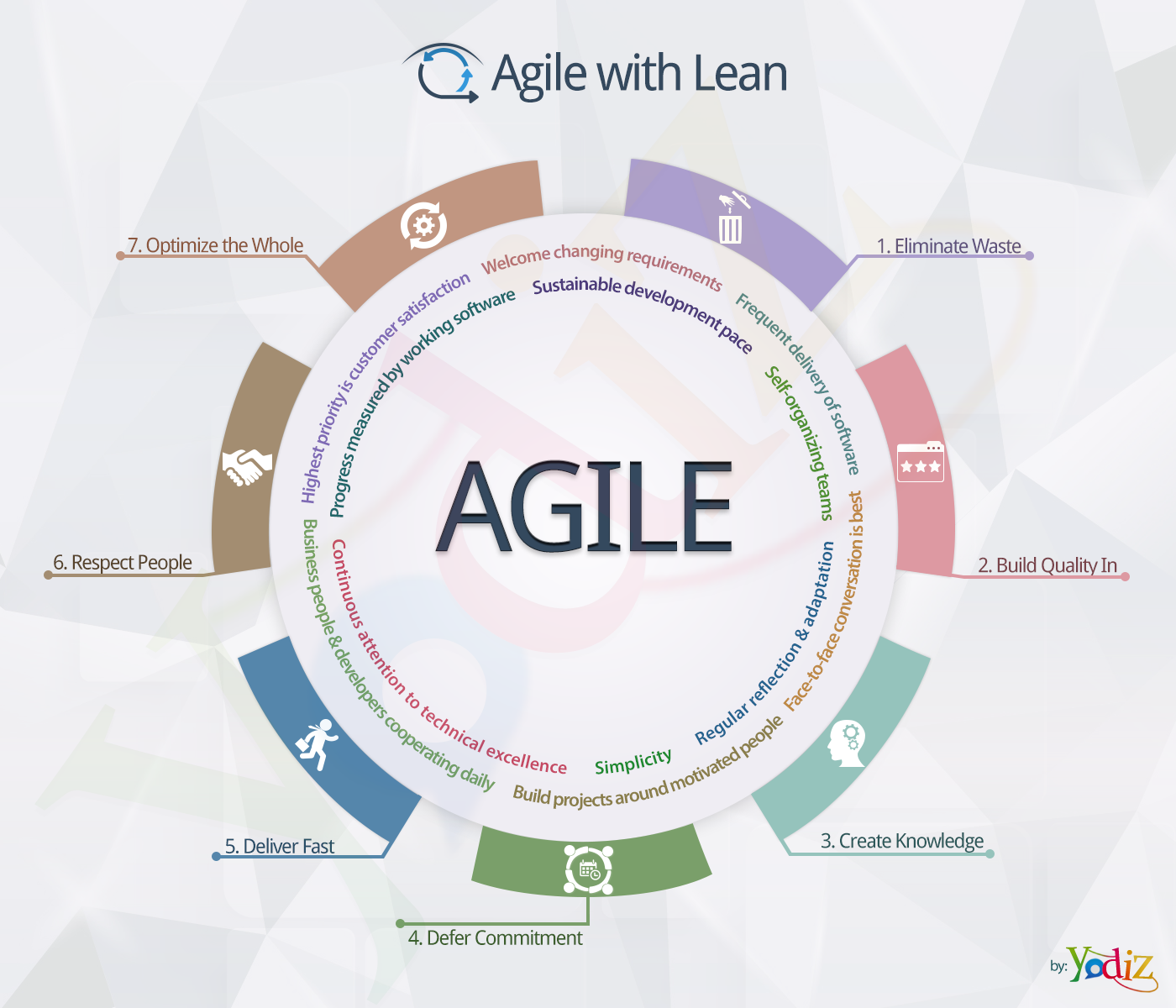Just as Agile methodology has transformed the software development sector, a similar process called Lean manufacturing has transformed the manufacturing sector. Both methodologies are based upon similar principles of continuous improvement, emphasis on feedback from the customer, and eliminating unnecessary processes in order to increase efficiency. It only seems natural to assume that attempts would be made to combine these two methodologies to create an even more beneficial practice. But can this really be achieved? To answer this question we will first have a look at the Lean process:
The word Lean comes from ‘Lean manufacturing’, which comes from the Toyota Production System and is mainly used in the manufacturing industry with great success. The Lean methodology focuses on aggressively reducing ‘waste’, which it defines as processes that are not adding value to the product. It takes into account waste created due to overburden, and waste created through unevenness in workloads. Essentially it focuses on making all value adding processes obvious by reducing everything else. It is due to these features that there has been a connection between lean and agile from the very beginning.
The graphic above shows us the principles of Lean on the outside of the circle, as well as the core principles of Agile inside the circle. Connections can be drawn between the principles of both methodologies, which will reveal how an Agile team can become more Lean.
The eliminate waste principle when translated into an Agile framework means the elimination of wasteful processes in the software development lifecycle, and will result in the reduction of routine tasks which slow down overall performance. This will increase the quality of face to face conversation in daily scrum meetings.
The Build quality in principle goes hand in hand with the Agile principle of continuous attention to technical excellence. This means a higher priority will be given to adding maximum customer value while the product is being worked upon, and there won’t be a need to go back to the software once it has been shipped.
The Daily standup meetings held by teams practicing Agile method are a good way to Create knowledge as per the requirements of Lean. This will also help to foster cooperation of business and developers on a daily basis.
The lean principle of Defer commitments, which means taking decisions at the last possible moment also goes hand in hand with the Agile principle of Maintaining a sustainable development pace.
The release cycle in an Agile project follows the Deliver fast agenda of the Lean methodology. Frequent releases are made, and each new release incorporates features created by user feedback from the previous release. This also makes it possible to measure progress by working software.
The Lean principle of respecting people goes hand in hand with the Agile principle of building projects around a motivated team.
Lastly, Optimising for the whole, which means to increase the efficiency of how the team operates as a whole will also allow for teams that are self-organizing and welcome changing requirements.
As can be assessed by the comparisons made above, Agile and Lean are fully capable of going hand in hand with each other, as essentially both methodologies are quite similar by nature.

